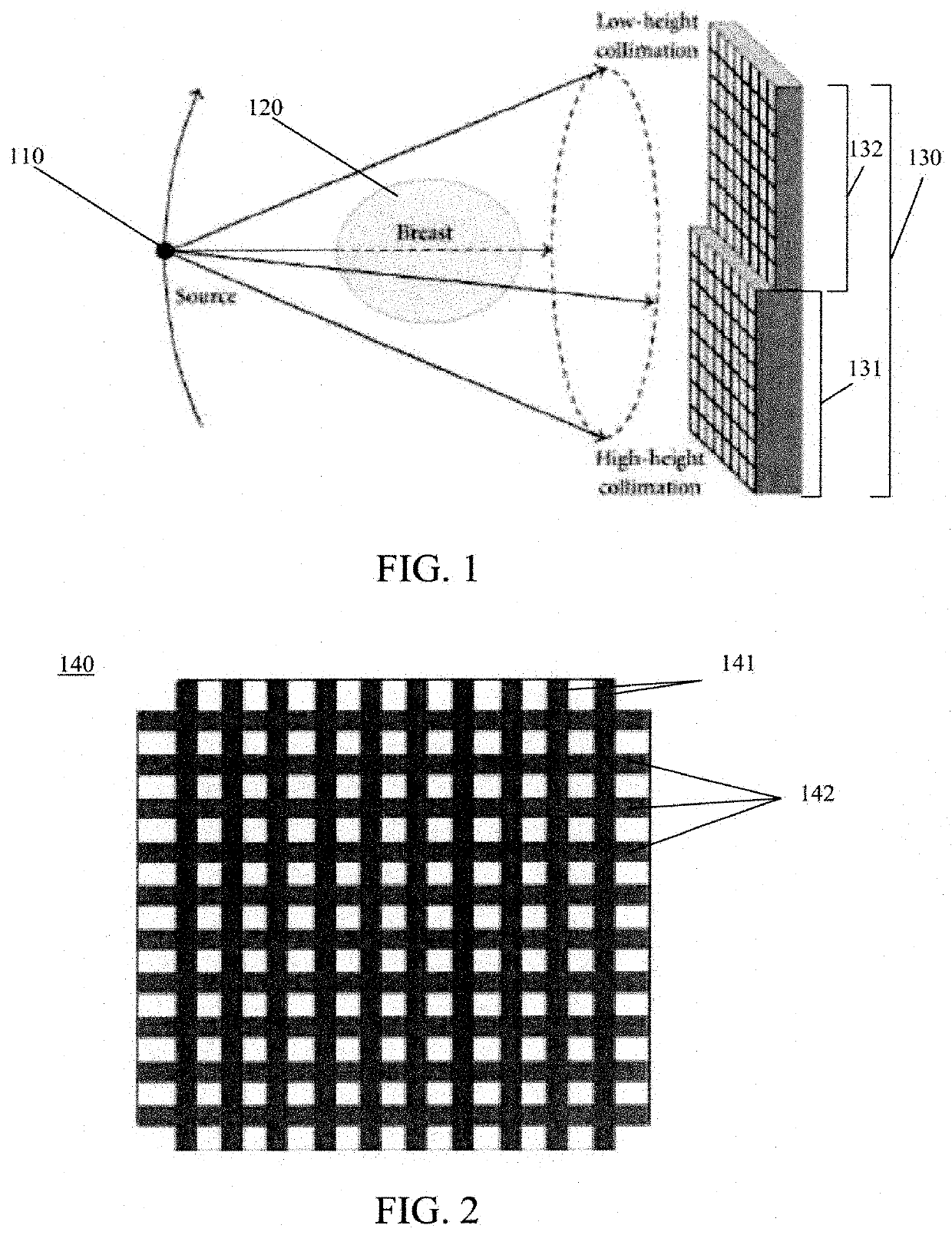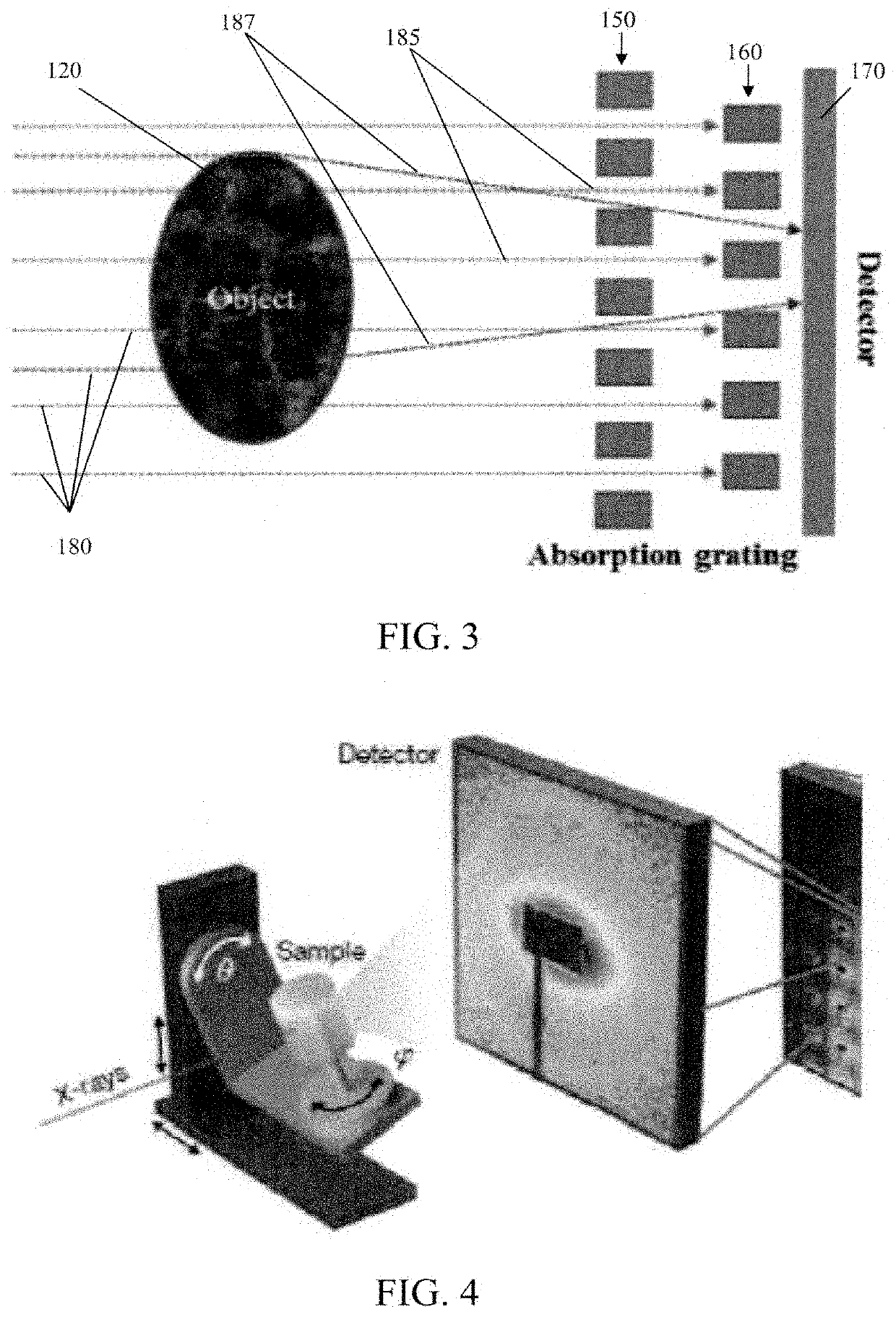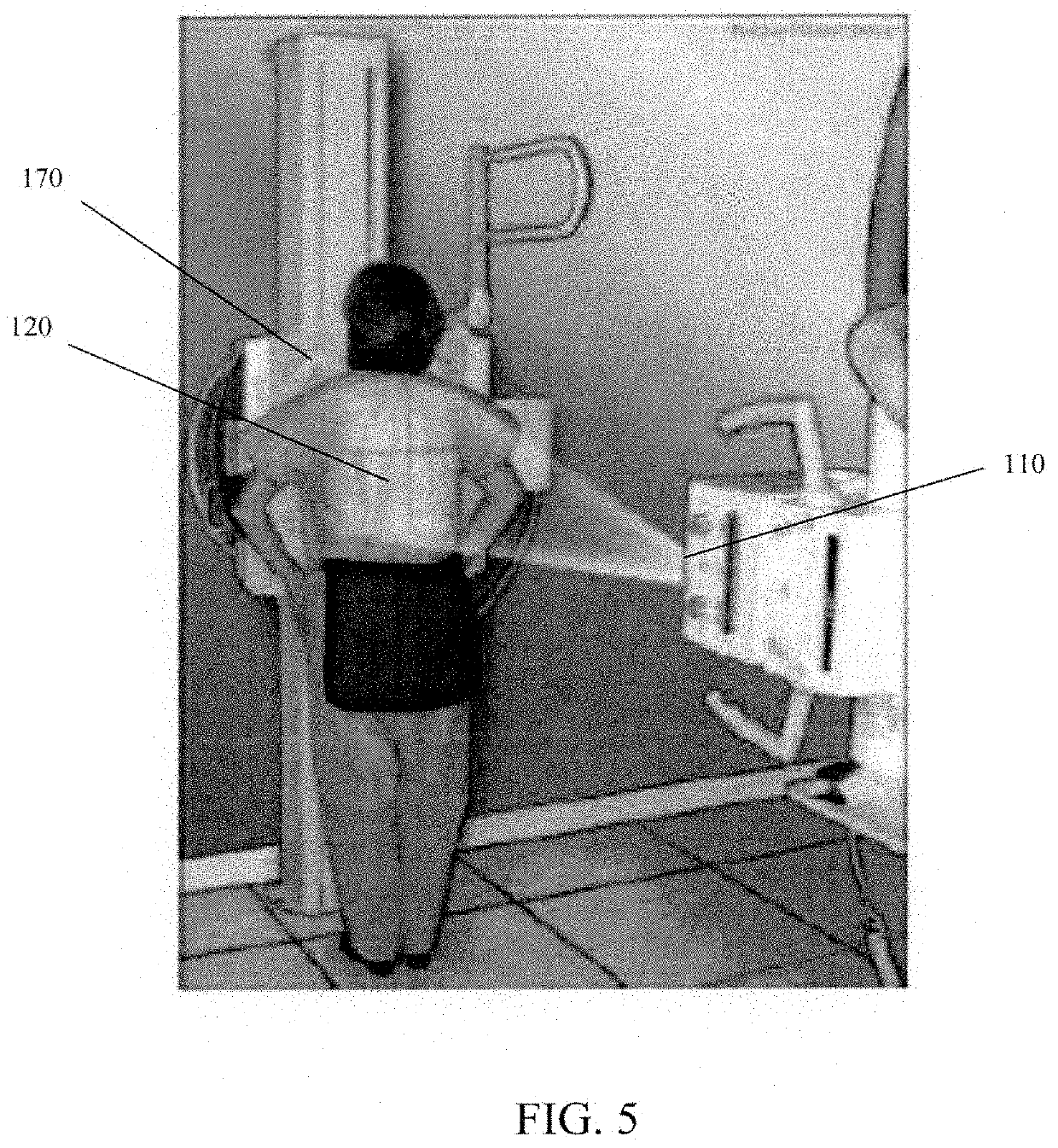Energy-sensitive multi-contrast cost-effective ct system
a multi-contrast, cost-effective technology, applied in the field of energy-sensitive multi-contrast cost-effective ct system, can solve the problems of ct and other types of ct imaging, x-rays lack the power to observe biological soft tissues, etc., and achieve the effects of small size, fast data acquisition, and convenient us
- Summary
- Abstract
- Description
- Claims
- Application Information
AI Technical Summary
Benefits of technology
Problems solved by technology
Method used
Image
Examples
example 1
[0050]EGSnrc simulation software was used to simulate small angle scattering imaging using a system according to an embodiment of the subject invention. Monte Carlo simulations were performed on the system.
[0051]EGSnrc is a well-known simulation software whose function is to model the passage of electrons and photons through matter. Because it relies on Monte Carlo, which is the most accurate method to model the transport of radiation, the simulation results discussed herein are logical and reliable.
[0052]The gratings were composed of tungsten. The height and width of each grating cell were set to be 1 centimeter (cm) and 0.5 millimeter (mm), respectively. The dimensions of the detector were 100 mm×3 mm with a pixel size of 1 mm. The grating was aligned with the middle of the detector. The length of the gap between the two layers of the grating was 0.1 cm. The X-ray source was a parallel-beam source with an operating voltage of 20 kilovolts-peak (kVp), and there was a total of 1.28×...
example 2
[0055]A second simulation experiment was performed using the same parameters as in Example 1, but only one phantom was used. The phantom 121 was located in front of the middle of the grating 150. In order to reconstruct the scattering data, the phantom was rotated 360 degrees equiangularly around its center, and 10 groups of scattering data were acquired. The profile of the average value of these 10 groups of scattering data is shown in FIG. 10 (the line that is less smooth). It can be seen that the quadratic fit curve (the smoother line) fits well with the profile, and that means the scattering signal is effective. By the physical model to describe X-ray small angle scattering based on the principle of energy conservation, these ten groups of scattering data were used to reconstruct the cross-sectional image of the phantom 121, which is shown in FIG. 11. The shape and size of the circle in FIG. 11 is completely consistent with the phantom. This result demonstrates that the scatteri...
PUM
 Login to View More
Login to View More Abstract
Description
Claims
Application Information
 Login to View More
Login to View More - R&D
- Intellectual Property
- Life Sciences
- Materials
- Tech Scout
- Unparalleled Data Quality
- Higher Quality Content
- 60% Fewer Hallucinations
Browse by: Latest US Patents, China's latest patents, Technical Efficacy Thesaurus, Application Domain, Technology Topic, Popular Technical Reports.
© 2025 PatSnap. All rights reserved.Legal|Privacy policy|Modern Slavery Act Transparency Statement|Sitemap|About US| Contact US: help@patsnap.com



